Gaeseong industrial park marks 10th anniversary
Risks still remain amid political, military tensions between the two Koreas
By Korea HeraldPublished : June 29, 2014 - 21:33
Over the last decade, the inter-Korean industrial park in Gaeseong, North Korea, has built its status as a crucial foundation for bilateral understanding and cooperation, which Koreans hope would pave the way for economic integration and eventual reunification.
Despite the “peninsular risks” involving persistent military and political tension, the park has seen the numbers of employers and workers, and its production scale, surge thanks to the tacit agreement by the two Koreas that it should be kept alive as a win-win project.
Despite the “peninsular risks” involving persistent military and political tension, the park has seen the numbers of employers and workers, and its production scale, surge thanks to the tacit agreement by the two Koreas that it should be kept alive as a win-win project.

Last year’s five-month shutdown sparked concerns about the possible demise of what has been touted as a rare symbol of cross-border reconciliation. But the dramatic deal on the “future-oriented” normalization reaffirmed both sides’ will to keep it unharmed.
“The Gaeseong industrial complex is the only inter-Korean project that has survived since the end of the Sunshine Policy (an engagement policy adopted by the past liberal governments),” said Rudiger Frank, a North Korea expert at the University of Vienna.
“Both North and South Korea seem to regard it as useful. Given the fact that there is little other regular and intense, working-level interaction, the value of the complex for inter-Korean relations is enormous.”
Experts said that the two Koreas should do more to insulate it from political and military standoffs and further develop it into an international complex. To this end, the two should find ways to increase the North’s workforce at the park and attract more investment from outside the peninsula, they said.
Pursuit of win-win model
The industrial park was born out of inter-Korean wishes to create a win-win model that would promote not only economic cooperation, but also bilateral reconciliation. Although politics has, at times, posed hurdles to these goals, the park has helped enhance ― or at least maintain ― cross-border exchanges, a crucial element of the inter-Korean trust-building.
“The park has helped the two Koreas restore their connections for cooperation, which had been cut due to the national division,” said Huh Moon-young, a senior fellow at the state-run Korea Institute for National Unification. “The complex also encouraged a gradual change in the North and helped the two build trust.”
For the cash-strapped Pyongyang, the industrial complex was a reliable source of foreign currency, particularly at a time when the international community imposes tough sanctions against it for its nuclear and missile development. The North currently rakes in some $87 million for the annual salaries of its workers.
Through the park, the North has also secured production techniques and learned how to operate businesses in terms of taxation, accounting, personnel management and investment attraction. The North has also accumulated knowledge about how to establish special economic zones, observers noted.
“The North may have also learned how to establish legal, institutional frameworks to push for reform and openness in its own style,” said Huh.
The complex has also benefited South Korean firms.
“Currently, there are some 125 firms operating in the North. But if you add all subcontractors of these firms, the total number of South Korean firms involved in the complex’s production may top 5,000. Thus, the park itself has a job creation effect for South Koreans as well,” said Cho Bong-hyun, a senior researcher at the Industrial Bank of Korea.
“On top of it, the existence of the inter-Korean complex has helped ease the so-called ‘peninsular risks’ and contributing to enhancing South Korea’s economic credit ratings and investor sentiment.”
For all Koreans, the complex was the only area where South and North Koreans can meet face to face on a daily basis and narrow the gap from the more than six-decade separation.
“The complex is a place where Koreans from the North and South learn from and about each other. Such learning is crucial for unification, and it should continue and intensify,” said Frank of the University of Vienna
Increase in personnel, production
For the pilot operations of the inter-Korean complex in 2004, there were only 15 South Korean firms with several thousand North Korean workers. Now, 125 firms are operating there with around 52,000 North Korean workers producing textiles, shoes, clothes, electronic equipment and other labor-intensive goods.
In line with the increase in the number of factories and personnel, the production amount had surged to $469.5 million, a 31-fold increase from $14.91 million in 2005, although the production sharply declined last year due to the temporary shutdown.
The total amount of the production over the last decade amounts to more than $2.3 billion.
Physical conditions for South Korean entrepreneurs have also improved much. A decade ago, employers had difficulty doing business there due to an unstable supply of electricity, water and even food.
“Well, a decade ago, conditions were poor. Our shoes got muddy and dirty very quickly as the roads were not paved back then. There wasn’t a stable supply of electricity and water, either. We also had a hard time finding eating places, a reason why we, at times, skipped meals,” said Oh Sung-seok who runs Nine Mode, a clothing factory in the park.
“Now, things have improved very much as we have little difficulty with such basic items. We just hope that the two Koreas can stably develop the complex based on good will and separate politics from economics.”
Of the North Korean workers, 70.6 percent are women. The average age of the workers is around 38. More than 82.8 percent were high-school graduates with the rest being university or college graduates, according to government data.
Peninsular risks
Despite the low-cost, compliant workforce, South Korean entrepreneurs have had to shoulder the risks of their businesses getting bogged down due to unceasing political and military antagonisms between the two Koreas.
The biggest challenge to the operations of the complex came last April when Pyongyang withdrew its workers after expressing displeasure over the South Korean media criticizing it for cashing in on the complex while churning out war threats against Seoul.
“The shutdown dealt a critical blow to my business operations, as my enterprise is based in the complex with no production facilities and staff in the South. Although the operations returned to normalcy, mental scars from the shutdown still live on,” said Oh of Nine Mode.
Four months after the shutdown, the two Koreans agreed to the “future-oriented” normalization of the park, vowing to keep it separate from political issues. But little progress has been made about the future-oriented operations amid strained inter-Korean ties.
The two Koreas initially planned to carry out the bilateral project to expand the park in three phases to ultimately create a 66.1-square-kilometer industrial enclave in and around the border city of Gaeseong.
Yet, they are still in the first phase in which they agreed to secure a 3.3-square-km area for the complex due to inter-Korean relations that have deteriorated because of Pyongyang’s adherence to nuclear development and provocative behavior.
Particularly after the North torpedoed the South Korean corvette Cheonan in March 2010, killing 46 sailors, the two sides could not find any momentum to discuss the remaining phases of the expansion plan.
Future path
To bolster production in the complex, experts and employers stress the need for the North to provide more workers. They say that the two Koreas should build large-scale dormitories so that more North Koreans from outside Gaeseong could work at the park.
Another issue for the park is that goods produced in the park are counted as imports from the North, a country, which many outside the peninsula are reluctant to do business with.
“The issue involving the country of origin is very crucial as it directly affects the employers’ efforts to expand their markets abroad. Thus, both sides need to work harder to make the products from the complex ‘made-in-Korea’,” said Cho of the IBK.
To reduce risks from inter-Korean standoffs, experts underscore the benefits of attracting foreign investors to the park. If foreign investors should be involved, the North would find it difficult to make unilateral decisions such as the abrupt shutdown of the complex.
By Song Sang-ho (sshluck@heraldcorp.com)
-
Articles by Korea Herald


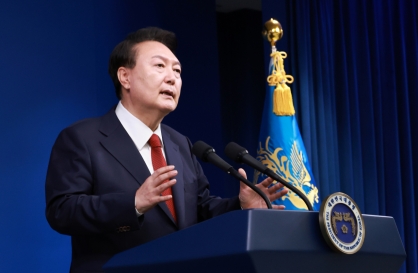


![[K-pop’s dilemma] Can K-pop break free from ‘fandom’ model?](http://res.heraldm.com/phpwas/restmb_idxmake.php?idx=644&simg=/content/image/2024/05/09/20240509050541_0.jpg&u=20240509173751)
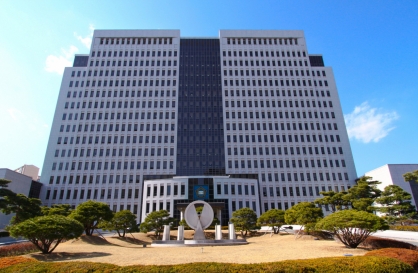



![[News Analysis] Yoon's first 2 years marked by intense confrontations, lack of leadership](http://res.heraldm.com/phpwas/restmb_idxmake.php?idx=644&simg=/content/image/2024/05/09/20240509050612_0.jpg&u=20240509233252)
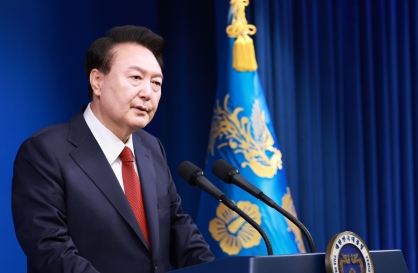



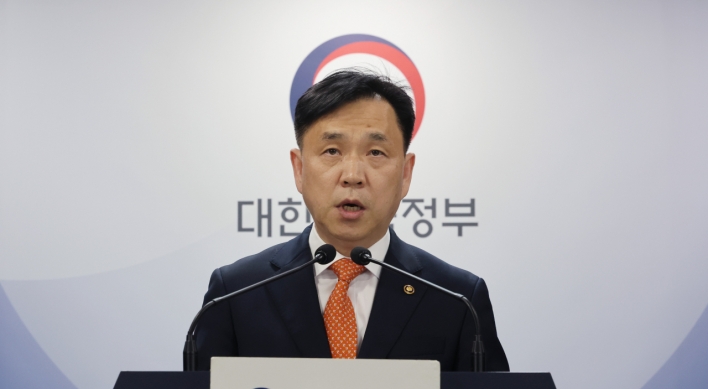


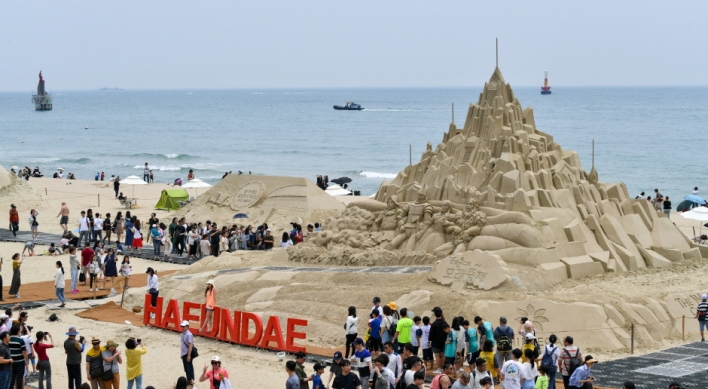
![[Today’s K-pop] NCT’s Mark to drop 1st solo album in February 2025](http://res.heraldm.com/phpwas/restmb_idxmake.php?idx=642&simg=/content/image/2024/05/10/20240510050597_0.jpg&u=)